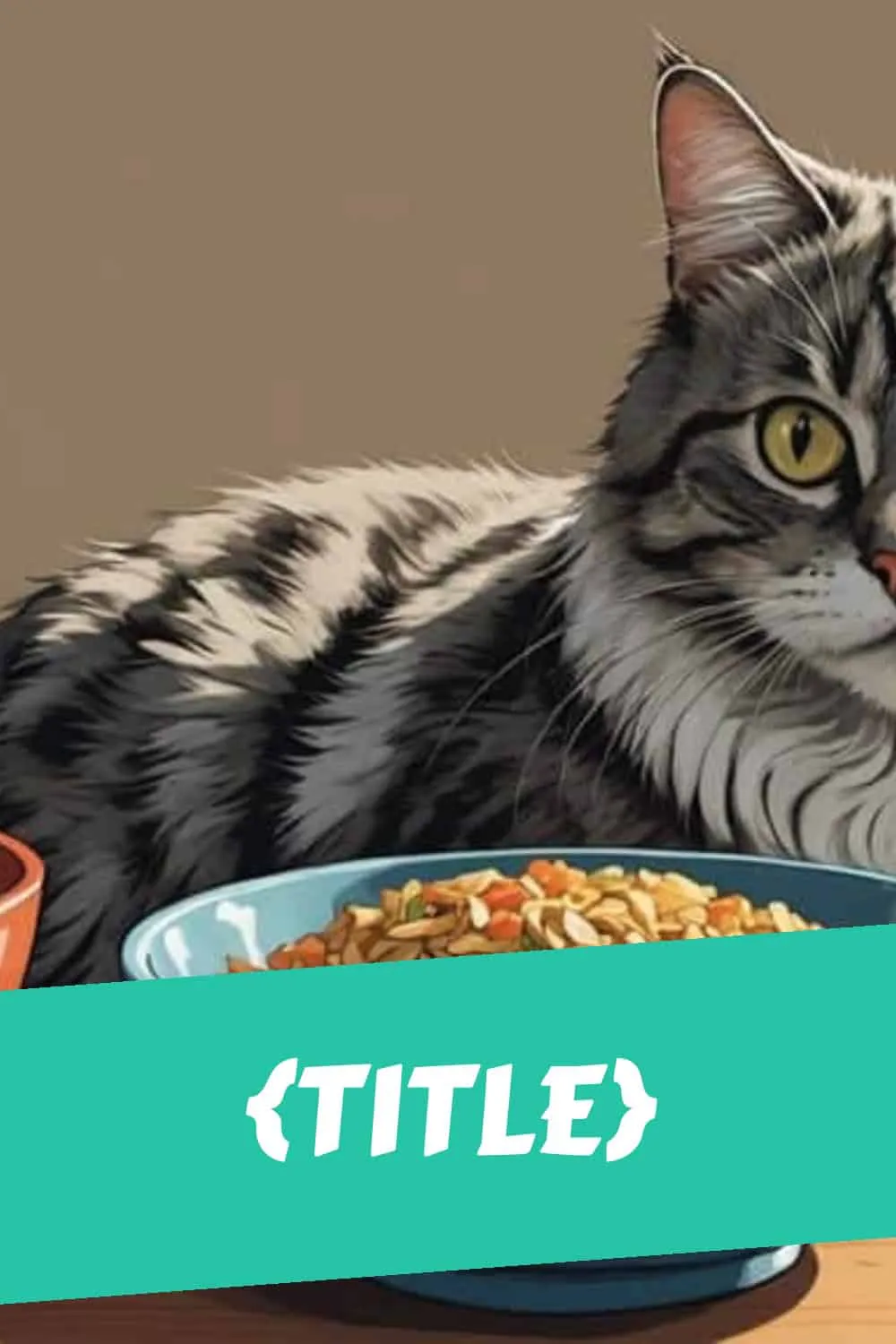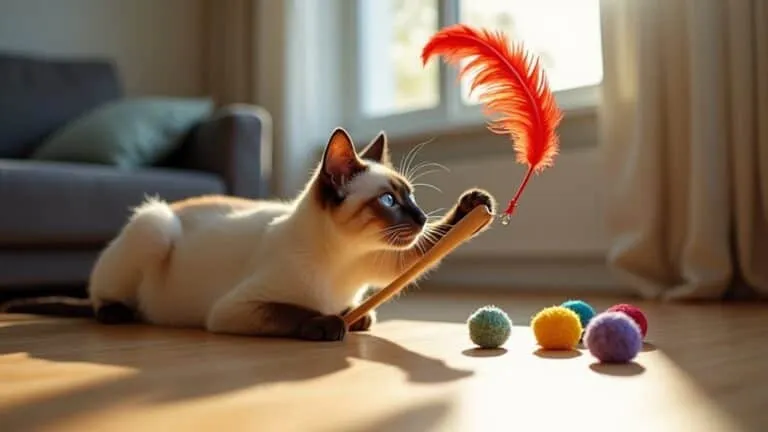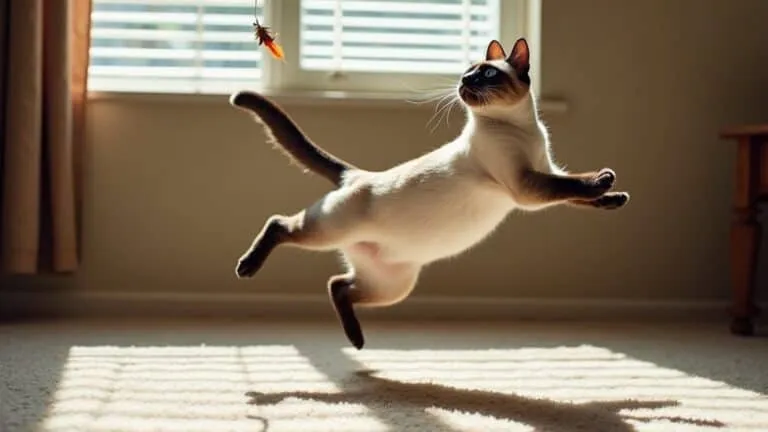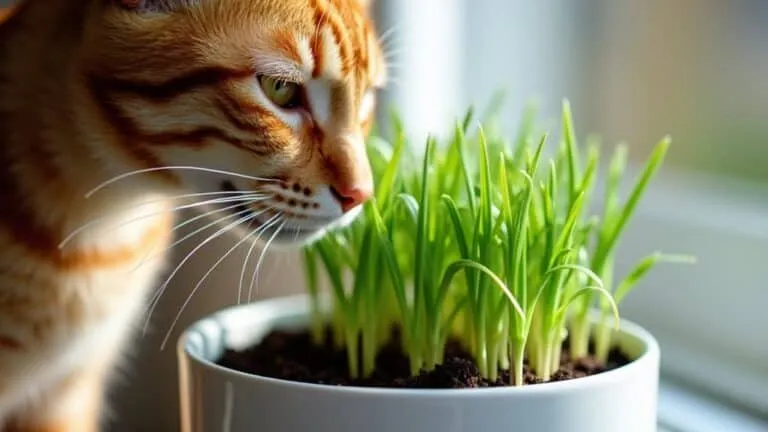The Best Fluffy Pancakes recipe you will fall in love with. Full of tips and tricks to help you make the best pancakes.
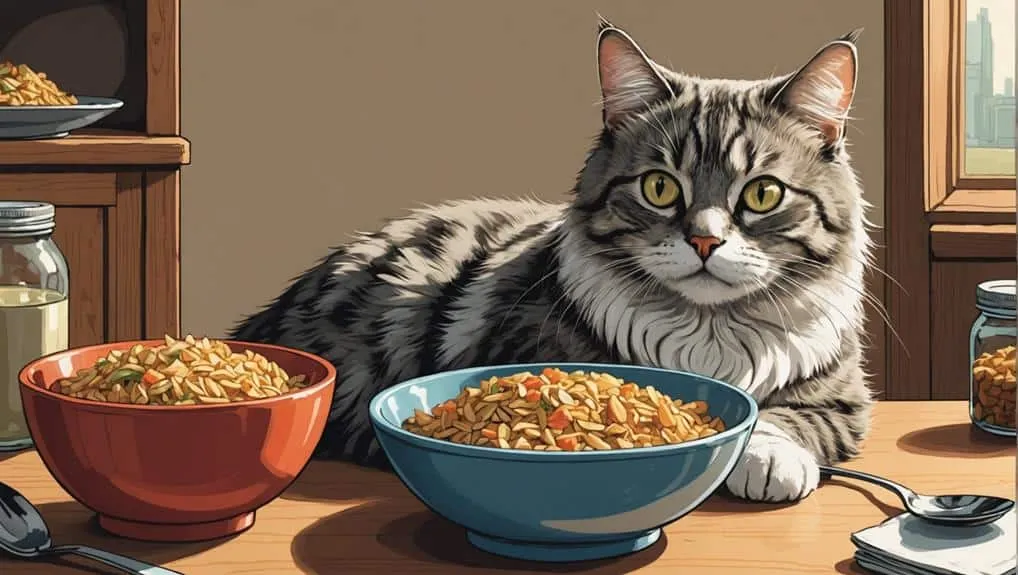
Cat whisker fatigue isn’t a myth; it’s a valid concern for many cats. This condition arises when deep or narrow bowls cause discomfort, as whiskers rub against sides, leading to altered eating behavior. You might notice signs like reluctance to eat or pawing at food. Research indicates that cats prefer wider, shallower bowls to prevent discomfort and guarantee a better dining experience. While some experts question the severity of whisker fatigue, many veterinary professionals recommend designs that mitigate this potential issue. To enhance your cat’s comfort, consider adjusting their feeding setup. There’s much more to explore about this topic.
Understanding Whisker Fatigue
While you may not have heard of whisker fatigue before, it’s a phenomenon that affects many cats during feeding times. Whiskers serve as essential sensory organs, helping your cat navigate their environment and detect nearby objects.
When these sensitive whiskers come into contact with deep or narrow cat bowls, they can experience discomfort, potentially disrupting their eating behavior.
Signs of whisker fatigue may manifest as a cat hesitating before approaching food, pawing at food in an attempt to retrieve it from a bowl, or even preferring to eat from the floor. These behaviors suggest that your cat might be experiencing discomfort related to whisker contact with the sides of their bowl.
To alleviate this issue, consider using shallower, wider bowls designed to accommodate your cat’s sensitive whiskers.
While whisker fatigue isn’t officially recognized as a medical condition, it’s essential for you as a cat owner to monitor your pet’s overall behavior and eating habits.
Understanding whisker fatigue can help you create a more comfortable feeding experience for your feline friend, promoting better nutrition and overall well-being.
Causes of Whisker Fatigue
Understanding the causes of whisker fatigue is essential for ensuring your cat’s comfort during feeding. One common cause of this discomfort is the way a cat’s sensitive whiskers interact with the sides of food or water bowls. Cat whisker fatigue explained is important for pet owners to recognize, as it can lead to stress and avoidance of mealtime. Providing shallow, wider bowls can alleviate this issue and create a more enjoyable feeding experience for your feline friend.
The design of food bowls plays a key role, as high-sided or deep bowls can lead to sensory overload for some cats.
Observing behavioral indicators, like reluctance to eat or pawing food out of bowls, can help you identify if your cat is experiencing this condition.
Bowl Design Impact
Many cat owners mightn’t realize that the design of food bowls markedly impacts their pets’ eating habits and overall comfort. Deep and narrow bowls can lead to whiskers rubbing against the sides, causing discomfort that may contribute to whisker fatigue.
This discomfort can manifest in cats exhibiting distressing behaviors, such as pawing food out of their bowls to eat off the floor.
Research has shown that many cats prefer wider, shallower bowls, as these designs allow for easy access to food without subjecting their sensitive whiskers to constant contact. The impact of bowl design on cats’ eating behavior is significant; whisker-friendly bowls encourage more relaxed eating habits and generally reduce mess compared to traditional options.
Specialized bowls designed for whisker sensitivity, like those offered by brands such as Americat, have garnered positive feedback from owners seeking to enhance their cats’ dining experiences.
Sensory Overload Theory
The design of your cat’s food bowl not only affects their comfort but may also contribute to sensory overload, a potential cause of whisker fatigue. Whiskers, or vibrissae, are highly sensitive tactile hairs that help your cat detect environmental changes. When food bowls are deep, repeated contact with the sides can lead to overstimulation of the sensory receptors at the whiskers’ base, resulting in whisker stress.
Consider these factors that may contribute to sensory overload:
- Deep bowls causing discomfort during feeding
- Hesitancy or avoidance behaviors around food bowls
- Pawing food out to eat off the floor
Research indicates that common cat behaviors, such as reluctance to approach food bowls or even aggression during feeding, might signal a response to uncomfortable conditions created by sensory overload.
While some debate exists within the veterinary community regarding whisker fatigue, awareness of its potential impact on individual cat behavior is growing. By recognizing the signs of sensory overload, you can make informed adjustments to your cat’s feeding environment, ensuring a more comfortable and enjoyable mealtime experience for them.
Behavioral Indicators
When observing your cat’s behavior, subtle signs can reveal whether they’re experiencing whisker fatigue. Cats may hesitate to approach their food bowls, displaying hunger but also anxiety or distress. This hesitation often manifests as pawing food out of deeper bowls, which indicates discomfort from their whiskers touching the sides.
If you notice your cat leaving uneaten food despite showing signs of hunger, this could suggest they’re overwhelmed by the bowl’s design, leading to whisker stress. You might also see messiness around the feeding area, with food scattered on the floor, hinting that your cat prefers to eat outside the bowl due to discomfort.
Additionally, increased aggression towards other pets during feeding times can signal stress related to the overwhelming sensations caused by whisker contact with the bowl.
Signs of Whisker Fatigue

If you notice your cat hesitating to approach their food bowl, it could be a sign of whisker fatigue.
You might also see them pawing food out of the bowl to eat off the ground or leaving uneaten food behind, despite their apparent hunger.
Additionally, mess around the feeding area and increased aggression during mealtime can indicate environmental stressors linked to this condition.
Common Behavioral Indicators
Cats experiencing whisker fatigue often exhibit specific behavioral indicators that can help you identify their discomfort. Recognizing these signs is vital for effective cat care, ensuring their well-being and happiness. Some common indicators of whisker fatigue in cats include avoiding their food bowls, showing signs of aggression when their whiskers touch the sides of the dish, or even eating from the floor instead. Providing shallow, wide dishes can help alleviate the discomfort associated with whisker fatigue in cats. By being attentive to these signs and adjusting their environment, you can enhance their overall quality of life.
- Pacing in front of food or water bowls, indicating distress despite visible hunger.
- Pawing food out of bowls and preferring to eat off the floor, a response to discomfort from their sensitive cats whiskers.
- Hesitation before approaching bowls, displaying anxiety even when they’re hungry.
You might also notice aggression towards other pets during meal times, which can signal stress linked to whisker irritation from bowl contact.
Additionally, messy feeding areas, with notable food spillage and leftovers in bowls despite cravings, can further indicate that your cat is experiencing whisker fatigue.
Understanding these behavioral indicators is essential in recognizing whisker stress. By observing and addressing these signs, you can create a more comfortable feeding experience for your cat.
Consider adjusting the type of bowls you use or their feeding environment to minimize discomfort related to whisker fatigue in cats. Your attentive care can greatly improve their quality of life.
Eating Habits Changes
Recognizing changes in eating habits can be essential for identifying whisker fatigue in your cat. As a cat parent, you might notice your feline pacing in front of food or water bowls, which can indicate frustration or anxiety about eating. This behavior often stems from whisker stress, where your cat’s sensitive whiskers become overstimulated by the sides of traditional deep bowls.
You may also observe your cat pawing food out of bowls and eating it off the floor. This preference suggests discomfort with bowl interactions, signaling that the bowl’s design may not be suitable for your cat. Refusal to eat from these bowls, even when hungry, can further confirm whisker fatigue.
Additionally, if you notice messy eating areas and uneaten food left in bowls, your cat might be experiencing discomfort linked to whisker fatigue. Aggressive behavior toward other pets during feeding times could also arise as a response to this stress.
Environmental Stress Factors
Environmental stress factors can greatly impact a cat’s well-being, particularly in relation to whisker fatigue.
If you notice your cat hesitating before approaching their food bowl, it might indicate anxiety associated with whisker stress. This behavior shows that even though they’re hungry, an unpleasant sensation from their whiskers touching the sides of a traditional bowl can create discomfort.
Consider these signs of whisker fatigue:
- Pawing food out of bowls to eat off the ground, indicating discomfort.
- Leaving uneaten food despite showing hunger, suggesting distress linked to their feeding setup.
- Aggression towards other pets or humans during feeding times, revealing stress during eating or drinking.
Using a deep bowl might exacerbate issues, as the narrow edges can push against their sensitive whiskers.
Messy feeding areas often signal whisker fatigue, with food or water spilled when your cat struggles with their bowl design.
Differentiating Whisker Fatigue From Other Issues
When evaluating your cat’s eating behavior, it’s vital to distinguish whisker fatigue from a range of other potential health issues. Whisker stress can manifest through behaviors such as pawing food out of bowls or eating off the floor, but these signs might also indicate dental disease, liver or kidney issues.
Persistent abnormal eating behaviors warrant a thorough veterinary evaluation to rule out serious medical conditions.
Additionally, environmental stressors or social dynamics, like bullying from other pets, can lead to similar feeding behaviors. It’s important to take these factors into account when evaluating your cat’s situation. For instance, some cats may display aggression during feeding times due to stress unrelated to whisker sensitivity.
Being aware of the overlap between whisker fatigue symptoms and other health or behavioral problems allows you to monitor your pet effectively. If you notice changes in your cat’s appetite or eating habits, consult your veterinarian.
They can provide a proper diagnosis and recommend appropriate interventions, ensuring your cat receives the best care possible while distinguishing between whisker fatigue and other underlying issues.
Importance of Whisker Sensitivity
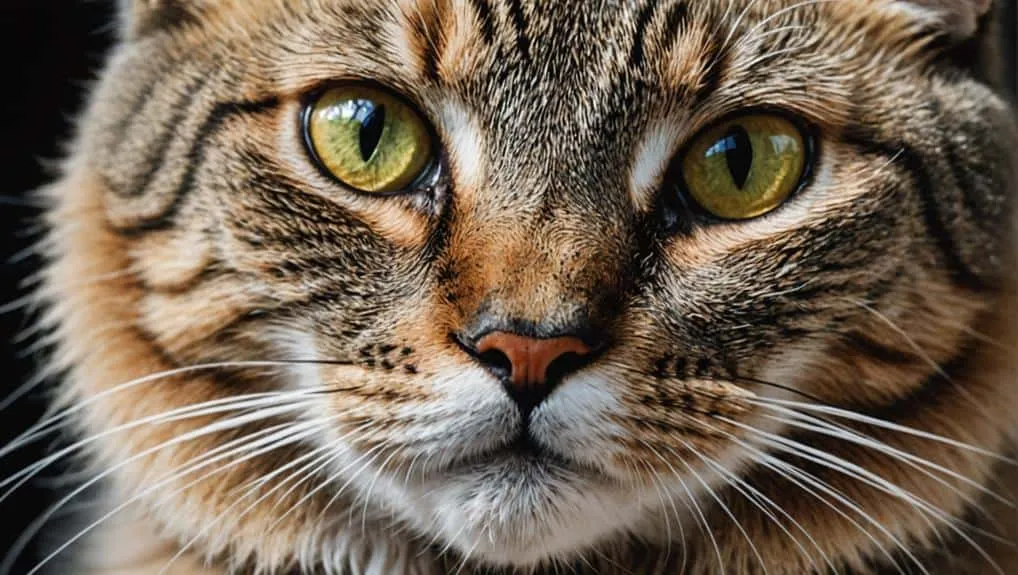
The importance of whisker sensitivity in cats can’t be overstated, as these specialized sensory organs, known as vibrissae, play a significant role in how cats interact with their surroundings. Whiskers are highly sensitive and packed with nerve endings, enabling cats to detect subtle changes in their environment. This sensitivity is essential for maneuvering and thriving, particularly in low-light conditions.
- Whiskers help cats gauge the size of openings, allowing them to assess whether they can fit through tight spaces.
- They assist in detecting air currents, providing information about nearby objects and potential threats.
- The sensitivity of whiskers triggers a blink reflex that protects their eyes from sudden movements.
These specialized structures are imperative for a cat’s survival instincts, helping them avoid accidents and injuries. The ability to maneuver confined spaces and assess their environment enhances their agility and defensive reactions.
Understanding the significance of whisker sensitivity not only fosters better care for your feline companion but also highlights the intricate ways they interact with the world around them. By recognizing their whiskers’ role, you can help create a safer environment that accommodates their natural behaviors.
Research on Whisker Fatigue
Recent research has cast doubt on the concept of whisker fatigue in cats, particularly a study from Washington State University that examined the feeding habits of 38 housecats. The study evaluated cats’ behaviors when presented with both regular and whisker-friendly bowls, aiming to assess signs of whisker stress.
| Aspect | Findings |
|---|---|
| Food Consumption | No significant differences between bowl types |
| Dropped Food Amounts | Similar rates for both regular and whisker-friendly bowls |
| Eating Duration | No notable variations observed |
| Preference Trial | 63% showed a preference for whisker-friendly bowls |
| Other Influencing Factors | Dish proximity may affect choices more than whisker fatigue |
While 63% of cats preferred whisker-friendly dishes, the research did not conclusively link this to discomfort. Instead, it suggests that other factors, like bowl placement, could influence feeding behaviors. Overall, the findings raise questions about the validity of whisker fatigue as a widespread condition, underscoring the importance of further research to fully understand cats’ feeding behaviors.
Practical Solutions for Cat Owners
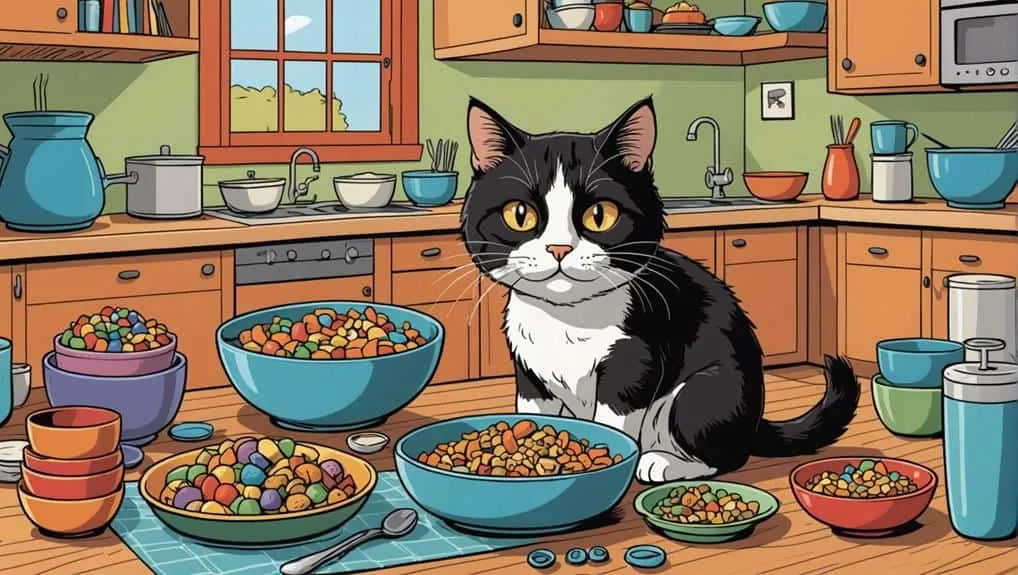
Understanding the potential challenges related to whisker fatigue can help cat owners create a more comfortable feeding environment for their pets. By addressing whisker stress, you can enhance your cat’s mealtime experience and promote better eating behaviors.
Consider implementing the following practical solutions:
- Use wider, shallower bowls: This design minimizes whisker contact with the bowl sides, reducing discomfort during feeding.
- Opt for stainless steel cat bowls: These bowls are hygienic and bacteria-resistant, providing a stable and safe feeding environment.
- Incorporate whisker-friendly bowls: Specialized bowls, like those from Americat, can notably improve your cat’s eating habits and decrease stress.
Additionally, providing a flowing water source, such as a water fountain, encourages proper hydration and lessens feeding-related anxiety.
It’s crucial to observe and document your cat’s eating behaviors to identify any signs of discomfort. By making targeted adjustments to their feeding arrangements, you can create an environment that prioritizes their well-being.
With these strategies, you can actively work to alleviate whisker fatigue and foster a more enjoyable feeding experience for your feline friend.
Veterinary Insights on Whisker Fatigue
Veterinary professionals often approach the topic of whisker fatigue with skepticism, as many don’t recognize it as a legitimate medical condition. It’s not included in standard veterinary textbooks, and there’s a lack of broad consensus on the issue.
A 2020 study found no significant differences in eating behaviors between regular and whisker-friendly dishes, suggesting whisker stress may not be widespread.
Symptoms often attributed to whisker fatigue, like picky eating and pawing at food, can mimic underlying health problems. This makes a thorough veterinary evaluation imperative to rule out more serious issues.
While cats’ whiskers are undeniably sensitive and play essential roles in their sensory experiences, the discomfort from interactions with food bowls remains uncertain among professionals.
Many veterinarians recommend using stainless steel cat bowls, which can help maintain hygiene and potentially reduce discomfort during feeding. However, continued research is key to better understand whisker sensitivity and clarify the nuances surrounding whisker fatigue.
For cat owners, paying attention to their pet’s eating habits and consulting with a veterinarian can help guarantee their feline companions are healthy and comfortable.
Frequently Asked Questions
Do Cats Actually Get Whisker Fatigue?
While whisker sensitivity can affect cat behavior, evidence on whisker fatigue is inconclusive. You should observe your cat’s interactions with food bowls, as sensory overload may impact feline comfort and feeding habits. Adjustments can help.
Is Whisker Fatigue Fake?
Whisker fatigue isn’t universally accepted; whisker sensitivity might affect feeding habits for some cats. However, feline behavior often reflects sensory overload from various factors, so it’s essential to evaluate other potential causes alongside bowl types.
What Is the Myth About Cat Whiskers?
The myth about cat whiskers suggests that their sensory functions cause feline stress when touching bowls. Addressing whisker health tips and using appropriate feeding bowl designs can aid in promoting comfort and well-being for your cat.
Do Cats Fall Over if You Cut Their Whiskers?
Cutting a cat’s whiskers doesn’t cause them to fall over, but it disrupts their sensory function. Whisker length is crucial for feline behavior and overall cat health, impacting spatial awareness and navigation.
Final Thoughts
In summary, while whisker fatigue is a topic of debate, understanding its implications is essential for your cat’s well-being. By recognizing the signs and differentiating them from other issues, you can guarantee a comfortable environment for your feline friend. Research continues to explore whisker sensitivity, and implementing practical solutions can alleviate potential discomfort. Always consult with your veterinarian for personalized advice, as their insights play a significant role in maintaining your cat’s health and happiness.

